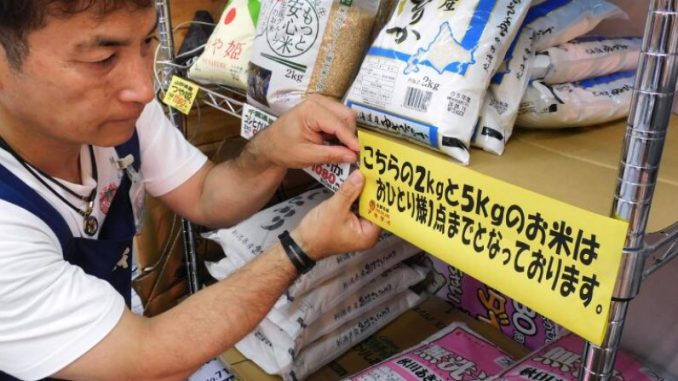
Throughout summer 2024, Japan has been grappling with a table rice shortage resulting in empty supermarket as demand outpaced production for the last three years causing stocks to deplete to their lowest levels in over 20 years.
Demand for table rice also spiked in August, as consumers bought more rice than typical in preparation for natural disasters during Japan’s typhoon season and following a major earthquake warning. The Ministry of Agriculture assured the public that the arrival of the new crop will alleviate the shortage in September. On top of the 6.6 million tons of table rice produced for domestic consumption, Japan also produced 1.3 million tons of rice for other purposes such as for feed, processing and exports; however, because the majority of 1.3 million tons are produced with government subsidies, they cannot be diverted to table rice to meet increased demand.
Rice is the staple food in Japan and domestically produced rice supplies almost 100 percent of consumption. Rice is produced throughout Japan, and store shelves are always filled with ample bags of rice year-round. In June 2024, the Japanese media began to report on rice shortages and coverage has continued to intensify to daily news stories through August and September. Although there is no national survey on how much rice is in short supply at retail outlets, in August, the Osaka Prefectural Government stated that that 80 percent of retailers in the prefecture were out of rice, and called upon the Ministry of Agriculture, Forestry, and Fisheries (MAFF) to release government contingency stocks.1 However, in a series of press conferences in August and September, MAFF Minister Sakamoto stated that sufficient inventory is secured and that the short-term shortage of rice occurred in part due to a temporary increase in demand for disaster preparedness. He also stated the release of additional government stocks could negatively affect the supply, demand, and price of rice and that the new rice crop will be available to consumers soon. On August 27, Prime Minister Kishida instructed MAFF to address consumers’ concerns and to work on smooth rice distribution and to ensure supermarkets are well supplied. Agriculture Minister Sakamoto commented that the rice shortage is expected to gradually recover as the new crop has already begun to appear on the market beginning in late August. MAFF expects that by the end of September, distribution will be in full swing, with approximately 40% of the annual shipment being marketed. In addition, due to warmer weather conditions, rice will be harvested about a week earlier than normal in many regions, and shipments are expected to be ahead of schedule. Based on a MAFF survey from August 2024, the new crop is growing well and if growth continues to be favorable, the production volume will increase from last year. Reflecting the shortage, retail rice prices increased 28 percent in August 2024 compared to a year ago (Chart 1). Media reports that the prices for the new rice crop are continuing to rise as farmgate prices are up 20-40 percent from 2023. Minister Sakamoto commented that the price will settle at a certain level when the projected abundant new crop reaches the market.
see more:
